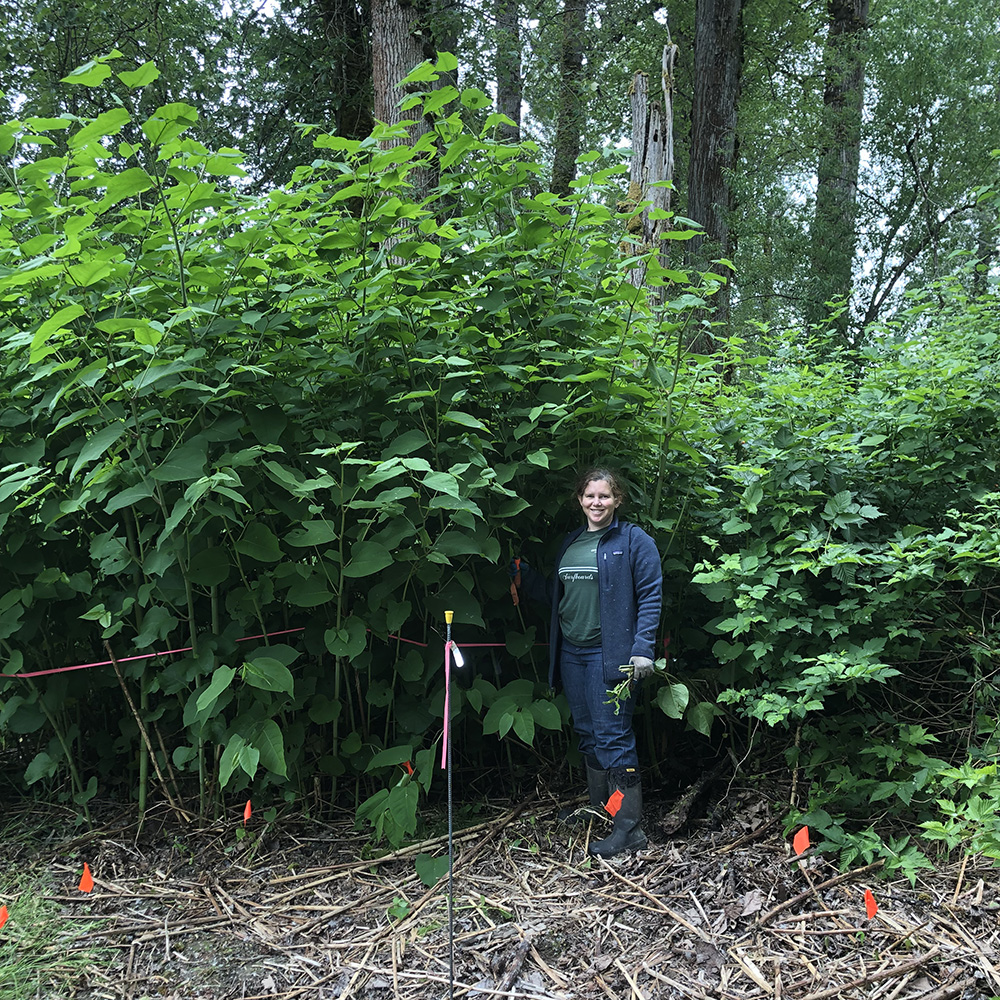Oh Knotweed, Knot Again!
A knotty problem in the Pacific Northwest
Knotweeds are tall, borderline immortal plants with hollow bamboo-like stems, heart-shaped leaves, and white flowers. When introduced outside their native range, these plants spread and quickly degrade land and soil resources.
Infestation is rapid and devastating, and once found these plants must be treated promptly since they can grow through foundations, wood, and even concrete! In recent decades, Japanese knotweed, giant knotweed, and their hybrid (bohemian or “hybrid” knotweed) have colonized the northeastern United States, the Great Lake States, and the Pacific Northwest.

Knotweed Research at Oxbow
At Oxbow, our Conservation Team, headed by Mat Distler, Ph.D., spent more than three years studying the different removal strategies for these noxious weeds. With help from King County Noxious Weed Control Program staff they employed various tactics, including foliar herbicide application, repeated cutting, and covering with landscape fabric to understand which are the most effective.
Herbicides tend to be the most effective treatment, especially for extensive stands, but as an organic farm, we cannot spray all the knotweed on our property. Thus, this opened the opportunity to combine some of the different eradication strategies to efficiently and effectively reduce the reach of knotweed.
Along the edges of organic-certified fields, controlling a strip of knotweed with landscape fabric and planting native plants provided a sufficient buffer to spray the knotweed further from the fields without contaminating organic crops safely. Mechanical cutting was also used in small, isolated stands and the conservation team also has experimented with covering and then growing native plants through the fabric.
While completely eradicating these invasive species is a long-term undertaking, understanding the best methods (or combination of methods) of control is a big step forward in our conservation efforts. Our Conservation Team was able to track, learn, and implement different strategies that will continue to allow them to control and reduce the growth of invasive species such as knotweed.

What can you do?
Information is one of our greatest allies in this battle. Knowing how to detect invasive species and what to do when you find one are the most critical things you can do. You can join this fight and help be a part of the solution by restoring native species. This effort starts with being informed, spreading the word, and ensuring this problem is not growing in your backyard.
When looking for signs of this plant, check for the following characteristics such as:
- Bamboo-like stems
- Red tinged shoots
- Zig zag stems
- Lush green leaves
- Shield shaped leaves with a flat base
- In July it will sprout clusters of white flowers
- Between September and November it will leave brown stems once the leaves have died back
It is worth remembering that even if Japanese Knotweed is not visible, it may still lay underground, especially in the winter months.

Interested in learning more about invasive species and want to play an essential role in the solution? Join us for a restoration party here at Oxbow on the second Saturday of every month, where you get to work directly with the Conservation Team learning from and with them and giving us a hand and having a direct impact on the wellbeing of our ecosystem.
Read the complete study and paper from our Conservation team here.
Additional Resources:
https://www.oxbow.org/conservation/resources/knotweed-information-and-control-resources/
